
|
 |

|
 |
Conference on Epic Women: Participants speak - Lalitha Venkat e-mail: lalvenkat@yahoo.com October 31, 2012 Kartik Fine Arts in association with Arangham Trust presents EPIC WOMEN, a conclave of talks, presentations and performances focusing on iconic women in myth, history, literature and life, from December 20 to 23, 2012 at Bharatiya Vidya Bhavan in Chennai. The speakers and performers share their thoughts about their presentations. 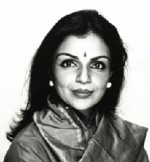 Your choice of 'Epic Women' as theme. My life and art has been a constant search to discover and re-populate my dance universe with interesting women. Women whose stories can be re-told and re-quilted for my internal landscape and for a contemporary audience. The concept of EPIC WOMEN was not the expected archetypes or tropes that are commonly referred to. The larger arc of the subject is to look for what prompts us to create giant-like psychic images of women - not just in myth - but also in performance, history, society and politics. The very idea of EPIC is also to make them human. These women had flaws and still resisted erasure from our memories. The contrast makes for an intriguing debate. In what way would this conference be different? I have always believed that when you create and stage something interesting and unique that people will find you. THE OTHER FESTIVAL was a case for ten years. The two conferences I curated and convened in 2000 and 2001 were also staged during the hectic Margazhi season. This year the conference has grown much larger and much more ambitious than last year's MAD AND DIVINE WOMEN. We have a greater geographical reach, more presenters, panelists and a wider variety of topics to cover. The evening performances contain SEVEN WORLD PREMIERES. That is a great honour by itself. That so many artistes trust us to share the first impressions of their art with the Chennai public. Bringing academics and performance together is not new but to have such world class scholars and performers together in the space of 3 days in a city that hosts the world's largest music and dance festival is very exciting. There is so much excitement this year and a lot more background work from the superb team at Arangham. We are often called one of India's best arts presenters by the artistes themselves. That is high praise indeed. - Dr. Anita R Ratnam (anitaratnam@yahoo.com) 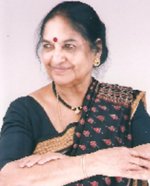 How does it feel to be chosen for this lifetime achievement award? I hold awards given by artistes and artistic organizations dear to my heart. Starting my dance career at a time when dance was taboo, fighting for the cause of dance, traveling great distances to find my Guru, creating a repertoire for Kathak, making choreography a career option for our youth, continuing my legacy through my students and till today birthing new works... sums up my lifetime with dance. I am thankful to Anita, Arangham Trust and Kartik Fine Arts for recognizing my long and arduous journey. This conference acknowledges the inspirational epic women from various world cultures and I deem it a great honour to receive an award on this occasion. I have seen 84 springs: troubled, happy as well as exciting. Met and worked with writers, dancers and musicians. Even in the winter of my life there are many aspirations and dreams I look forward to. God willing and energy permitting, let us hope that my zest for life and dance will continue ... - Guru Dr. Maya Rao (stemdance@hotmail.com) 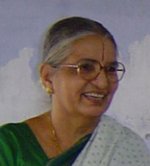 On your keynote address Why do we give precedence to Indian epic heroines? The answer is simple. It is here that the myths and legends of the past are not dead sea-scrolls. Sita, Savitri, Renuka and Kannaki are living heroines, directing the lives of millions even today. The Indian epic heroines never took the easy way out. None of them turned to suicide. They suffered, fought, and triumphed. Draupadi in the Kuru Court and Kannaki in the Pandyan Court are icons that remain pulsatingly alive. Epic women live forever as they draw from our lives the needed ballast to face more difficult times, as the centuries pass by. - Dr. Prema Nandakumar (premnand@dataone.in) 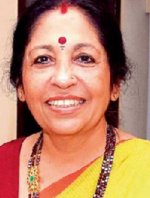 Comment on your choice of epic woman for the pre-conference performance. What message would you be conveying through your presentation? Music is the purest form of art. The singer has everything within him. With devotion and dedication, the notes come out from the very life, filling the entire universe with joy. It is because of the sheer joy music spreads, God's creation is known as the UNIVERSE - Uni meaning single, Verse meaning a song! - Revathy Sankkaran ( revsankaran@gmail.com) 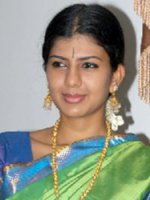 In your talk on the epic Sangam women, what is the message you plan to convey about them? There is a connection between women of the early times, women we have read about, heard about and women who live amongst us now. If we see that agency, the next time we look in the mirror we may recognize her there! Women from tribal practices, women for religious beliefs, women with contemporary lifestyles, have a continuum of psychic behaviours that reflect both sides of her. She is beautiful and ugly, she is calm and aggressive, she is auspicious and baneful. But how we have orchestrated her persona over centuries, beliefs, histories, is of much enquiry. For, in the stories of these Sangam women we can see our own. Twitched, tweaked and altered. But real. It is one story, and many lives. In a man's world, she is womanity. - Dr. Swarnamalya Ganesh (swarnamalya@gmail.com) 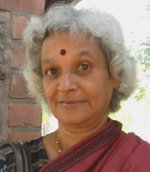 On your contribution to the panel on Sita as epic woman. Imagining Sita is based on my play Crossing the River where Sita becomes the non-gendered symbol and metaphor for every oppressed person and for all kinds of injustice and degradation that we experience. It is an attempt to expand the scope of both epics and the nature of epic women. It will explore how Sita's body becomes the landscape to read the history of human beings. - Dr. CS Lakshmi (cslakshmi44@gmail.com) 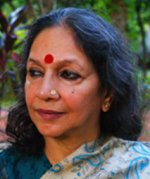 My few words are tentative as they reflect a work in progress. It is my personal interpretation of what Sita's life could mean. Through its course she moves from house to house - Janakpuri, Ayodhya, Panchavati, Ashoka Vatika in Lanka, Ayodhya and then Valmiki's ashram in the forest. In each of these houses, she is enabled to realise different aspects of her personality due to her experience of the milieu. And finally at Valmiki's ashram she combines all these contrary elements to express her complete self. A perfect balance between effectuation and effect. - Veenapani Chawla (adishakti@sify.com) 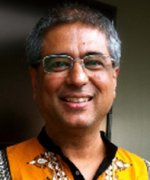 Your choice of topic. A woman scorned...I shall be exploring why women are not real people in our stories, past and present. - Mahesh Dattani (mahesh.dattani@gmail.com) 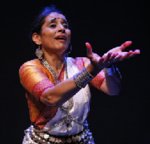 Comment on your choice of epic woman you will be portraying. What message would you be conveying through your performance? We all believe in an Indo-European connection brought about from migrations of Aryans who both went west and came east, but our notions are at best hazy. Eleni of Sparta not only tells the story of a fascinating woman, but brings out similarities between ancient Greece & ancient India: in musical modes, talas and language, yes, but also because - like Draupadi and Sita - she lived just when a matriarchal, goddess-centred, world was being overtaken by men - of war. - Rajika Puri (rajikapuri@yahoo.com) 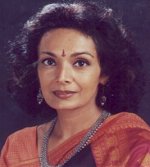 Anita wanted me to do something on a western epic woman; Shakespeare or Greek, she said. I chose Penelope, the wife of Odysseus, who chastely, according to Homer's account, waited for her husband for twenty years, because he went off to fight a war to bring back her more beautiful and romantic cousin, Helen of Troy. I chose Penelope because she was an unlikely heroine, remembered popularly for her chastity, as author Margaret Atwood voices her: "And what did I amount to...? An edifying legend. A stick used to beat other women with. Why couldn't they be as considerate, as trustworthy, as all-suffering as I had been?" But there was a lot more going on, in her, in the official and unofficial telling, and in its impact on our notions of women. Like Arundati, the steadfast mortal who became a star. There are others. I want to ask: what do 'pure' and 'immaculate' conceptions of women (by men, mostly) do to our actions in cultures and societies? - Chitra Sundaram (chitra@chitrasundaram.org)  Despite being under house arrest for so many years, Aung San Suu Kyi wants peace, not revenge. She is a national and international icon, an inspiration, a symbol of peace and courage, a spiritual, moral and political successor to leaders like Mahatma Gandhi and Nelson Mandela. Suu Kyi's life is like the peacock, a beautiful bird that cannot fly, and is full of paradoxes and contradictions. A Buddhist, who derives strength from her faith, her weapon is love, peace and freedom from fear. A beautiful, delicate woman, with a flower in her hair, who has the resolve of steel. - Anusha Subramanyam (anusha@beeja.com) 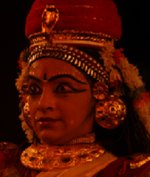 Sitaparityagam is inspired by Kalidasa's portrayal of the proud and saintly queen in Raghuvamsa. After his coronation as King of Ayodhya, Rama, disturbed by hearing rumors about his wife and Ravana, decides to abandon Sita in the forest. There she gives birth and brings up her sons under the guidance of Sage Valmiki. A regretful Rama comes once again in search of her but demands of her to once again prove her chastity through a fire ordeal. Sita then chooses to seek refuge in the bosom of her mother, the Earth. - Kapila Venu (kapikutty@gmail.com) 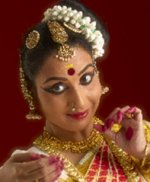 Surpanaka says, "I am a woman who was shamed by sheer arrogance and superiority by one who was princely and human. When my nose was chopped off, it was not as hurting as the scars that were drawn on my soul. History still only laughs at that dreadful abuse. What do humans know about feelings?" - Dr. Neena Prasad (drneenaprasad@gmail.com) 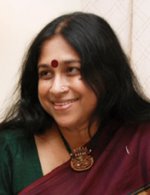 Grief is the eternal human condition. Can sorrow instigate change? Can pain kindle vision? As deserted wife and single mother Yashodhara searches for answers, her inner evolution becomes a timeless myth of human loss and ultimate transcendence. Yashodhara is inspired by the beautiful carving of a lotus on one of the entrance pillars of Sanchi -- roots embedded in slush, stem nourished by water, flower emerging into the air, and petals blooming in the sun. The work seeks to individuate that image as a metaphor of universal human experience and potential. - Gowri Ramnarayan (gowri.ramnarayan@gmail.com) 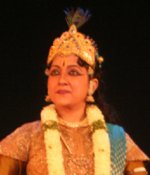 We have selected to perform the character of Amba /Shikhandi - very pivotal character in the Mahabharatha but relatively unsung! The Amba Shikhandi episodes questions the conventional role of a woman. After Bhishma abducted Amba and she revealed to her husband her love for Shalya, nobody accepted her: not him, not Shalya, not even her father nor anybody else. The struggle and loneliness of Amba plays a trenchant note in the epic. A woman driven by passion unknown to her and derided by revenge. Fate leaves her incomplete in both the lives. - Priya Murle (pmurle@gmail.com) 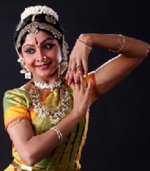 I'm presenting Panchali Sapatham with music by Lalgudi G. Jayaraman to portray the strength and character of women from Indian mythology. Draupadi was a woman of high esteem, who displayed grit and courage and ultimately surrendered to the divine supreme displaying one of the loftiest forms of bakthi, which is the core of human existence. - Urmila Sathyanarayanan (urmila.sathyanarayanan@gmail.com) 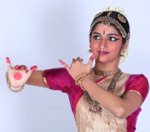 Sita is known for her dedication, self-sacrifice, courage and purity. However, from a feminist perspective, Sita's story is illustrative of the subjugation of women in Hindu culture. To uphold Sita as an example of the ideal woman and wife is to endorse male supremacy and female subservience. There is evidence that this "Sita Syndrome" encourages domestic violence and subjugation of women in the subcontinent and diaspora communities. In the Kamba Ramayanam, Kamban demonstrated his concept of love and chastity between man and woman using Rama and Sita as the ideal couple. When their eyes met, says Kamban, there was fusion between their feelings. As if to reemphasize the point, he added that because their minds fused with each other, there was mutual exchange of their hearts. - Sudharma Vaithiyanathan (sudharmadance@yahoo.com) 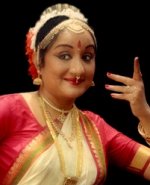 My dance vocabulary which relies on distinctly subtle body language dictated my choice of women. There is a profound emotional bond between a mother and son. The chasm created by separation evokes a strong yet controlled response from the two mothers I depict. The exile of Rama comes like a thunderbolt to Kousalya. Her immediate response is both moving and telling. She expresses her anguish with dignity and poise. Devaki never had the chance to mother her child, Krishna. Her imagined lullaby is both a deep felt longing and a wishful lament. I have explored verses from great Tamil mystics and poets to portray these two women. Kamban, Kulasekara Alwar and Arunachala Kavi are my literary inspiration. My melodies come to me naturally. My dance, I hope, creates rasanubhava in the viewers. - Lakshmi Viswanathan (lakshmi.vishwanathan44@gmail.com)  By abstracting Gandhian ideology and referencing historical moments from the independence struggle only through metaphorical gestures, we have found that this work has given us a voice for the many women, both in the past and present, whose pragmatism and feminist praxis have kept alive the philosophies of ahimsa, sustainable development, and non-violent protest. From Durgabai Deshmukh and Khurshedbehn Naoroji who protested Gandhi's exclusion of women from the Dandi march, and the 'Dictators' like Sarojini Naidu, Lado Rani Zutshi and Kamaladevi Chattopadhyay who organised satyagrahi cells picketing foreign cloth and liquor shops, to Gaura Devi's organising the Chipko movement, Medha Patkar's agitation for land rights, and Irom Sharmila's 11 years of imprisoned fasting... these are the experiences we are embodying through this work. If Gandhi provided the theoretical warp of this performance, then it is the female body in movement that is the weft, together weaving a narrative that explores the various facets of fighting for social justice. - Geeta Chandran and Deepa Dharmadhikari (geetachandran@gmail.com)  I will be portraying the character Savitri, the woman of great intelligence and virtue from the epic Mahabharatam. I have drawn and interpreted her character based on my readings from various sources and have interpreted her as a timeless woman who gives birth to herself and is herself Yama challenging Death that walks with each of us from the day we are born. I am interested in looking at how women empower themselves as the greatest storytellers and change the way society perceives them. A timeless story of love and death across cultures, Savitri - to me, is one who conquers love by embracing death. They are the same entities. It is intelligence through education that women can carry this message of love across countries to live a free and independent life alongside others. - Preeti Vasudevan (vasudevan.preeti@gmail.com)  Frida Kahlo created paintings of magnificence despite or perhaps due to her physical suffering. After her bus accident, she was never again free of pain and she had 32 operations over 29 years. In a situation where any other person would have given up, Kahlo expressed herself through her paintings in a timeless way, representing the strength, courage and boundlessness of the human spirit. - Kalpana Raghuraman (kalpanarts@gmail.com) 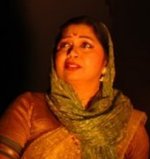 Mata Hidimba deals with the politics of war and the reality of single motherhood through the story of Hidimba and her son Ghatotkach who is killed in the Mahabharata. It also addresses contemporary issues such as the nature of terrorism, exploitation of the youth, greed for achievement and the harsh bias of casteism. - Rajashree Shirke (rajashreeshirke.2008@rediffmail.com)  How does it feel talking about your guru at the conference? I'm deeply moved my mother Indrani is being remembered today and am honoured to be reminiscing about her life and career. - Sukanya Rahman (sukanyarahman@gmail.com) 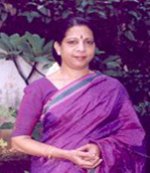 I feel the blessings of my teacher Bala through this unique opportunity that Anita has created and I look forward to a soul-filling experience. - Nandini Ramani (nandinirvr@yahoo.com)  Putting Rukmini Devi in historical and cultural perspective she seems the perfect product of her age amidst the early Arts and Crafts or Aesthetic movement that grew from the mid 19th continuing into the 20th century. She began her own artistic journey amidst a social push toward westernization, modernization and perhaps it is an unconscious coincidence that her work in many ways parallels the Aesthetic movement. As an artist, I look upon her as one of my life's heroes, and happily share my thoughts. - Katherine Kunhiraman (kkunhiraman@aol.com)  The immense body of thought and work that Chandralekha brought to us in the eighties and nineties is more important and relevant than ever today. Her work provides us with much more than 'form' and visual proposition. It is an entire and complete philosophy of the body, and its relationship to space and time. The rigor and aesthetic clarity of her dance while deeply rooted in the Indian context is at its very heart political and places the body at the centre of a much larger discourse. - Padmini Chettur (padminichettur@gmail.com)  On your choice of epic woman. Unlike her sister, the late Captain Lakshmi Segal or her sister-in-law Mridula Sarabhai, Mrinalini Sarabhai may not have put her life on the line, yet she is distinguished by her dedication to dance, her decision to fight injustice and to use classical dance as an act of social activism. To establish an institution in a city not known for its love of dance and to create dance works about dowry death and pollution at a time when few, if any dancers considered these topics suitable was indeed extraordinary. Mrinalini's vision sustained over the decades, despite personal tragedies, has indeed been an endeavour of epic proportion. - Andrée Grau (A.Grau@roehampton.ac.uk)  What point will you stress on in your discussion on epic women? Literary female figures with passions of epic proportions--ambition, revenge, lust--are fascinating to study. Usually, such dark emotions are held under control, but at times they emerge with devastating impacts on these women and their communities. What drives these female figures to act on dark passions? Why are they always judged negatively? What is their status in patriarchal societies? What kinds of power can they exert to assert themselves? - Ketu H Katrak (khkatrak@uci.edu) 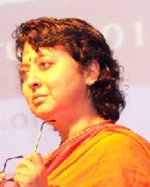 A.K. Ramanujan's essay "Many Ramayanas" first drew scholarly attention to women's many ways of telling the Ramayana story. I extend his argument by making such variability of styles, contexts, and interpretations possible not only for women but also for so called 'lower' castes and Dalits. Subaltern groups are understandably concerned with injustice; in Tamil Nadu, they worship Draupadi as a fiery goddess in a continuum with epic figures who die untimely and unjust deaths. - Dr. Kalpana Ram (kalpana.ram@mq.edu.au)  Sirimavo Bandaranaike, Indira Gandhi, Benazir Bhutto, Khalida Zia, Hasina Wajed, Chandrika Kumaratunga....and more recently several Indian women have simultaneously occupied top governance posts. What factors propelled these women into the political positions they occupy? How do the media and the public view them? Do they serve as role models? Why, despite so many prominent, successful women leaders, does India rank 105th in the world in women's participation in national politics and 129th in the UN Development Program's Gender Development Index? Must we look elsewhere for the truly epic women of politics? - Ammu Joseph (ammujo@gmail.com) Post your comments Unless you wish to remain anonymous, please provide your name and email id when you use the Anonymous profile in the blog to post a comment. All appropriate comments posted with name & email id in the blog will also be featured in the site. |